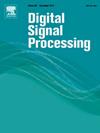MCF-Net:用于织物缺陷实时检测的多尺度上下文融合网络
IF 2.9
3区 工程技术
Q2 ENGINEERING, ELECTRICAL & ELECTRONIC
引用次数: 0
摘要
织物疵点检测在纺织品生产中起着保证产品质量的重要作用。然而,缺陷大小的显著变化等挑战导致现有模型的检测性能较差。为了解决这些问题,本文提出了一种多尺度上下文融合网络(MCF-Net)。首先,提出了多尺度上下文扩散融合金字塔网络(MCD-FPN),该网络对传统的特征融合路径进行了重新配置,并设计了关键组件多尺度上下文聚合模块(MCAM)。MCAM将从骨干网络中提取的多尺度特征作为输入,通过一系列深度卷积运算建立特征与其周围背景之间的远程依赖关系。然后使用MCAM的输出来增强浅层和深层特征,确保每个检测尺度包含全面的多尺度上下文信息。此外,为了提高网络的特征提取能力,提出了潜在特征转换器(Latent feature Transformer, LFT),将输入特征映射到高维空间,并通过高维信息压缩提取深度特征。其次,为了提高网络的多尺度感知能力,提出了局部交叉注意机制(LCA),该机制对特征的空间信息进行建模,以提高网络对全局上下文信息的理解。在自建的FD6052数据集以及公开的天池和DAGM2007数据集上的实验结果表明,MCF-Net在织物缺陷检测方面的有效性优于现有方法。此外,MCF-Net实现了85.6 FPS的推理速度,实现了工业规模的实时检测。本文章由计算机程序翻译,如有差异,请以英文原文为准。
MCF-Net: a multi-scale context fusion network for real-time fabric defect detection
Fabric defect detection plays a critical role in textile manufacturing to ensure product quality. However, challenges such as significant variations in defect sizes result in poor detection performance of existing models. To address these challenges, this paper proposes a Multi-scale Context Fusion Network (MCF-Net). First, The Multi-scale Context Diffusion Fusion Pyramid Network (MCD-FPN) was proposed, which reconfigures the traditional feature fusion path and designed a key component, the Multi-scale Context Aggregation Module (MCAM). MCAM takes multi-scale features extracted from the backbone network as input and establishes long-range dependencies between features and their surrounding background through a series of deep convolutional operations. The output of MCAM is then used to enhance both shallow and deep features, ensuring that each detection scale contains comprehensive multi-scale context information. Furthermore, to improve the network’s feature extraction capability, the Latent Feature Transformer (LFT) was proposed, which maps input features into a high-dimensional space and extracts depth features through high-dimensional information compression. Second, to improve the network’s multi-scale perception, the Local Cross Attention Mechanism (LCA) was proposed, which models the spatial information of the features to improve the network’s understanding of global context information. Experimental results on the self-built FD6052 dataset, as well as the publicly available TianChi and DAGM2007 datasets, demonstrate the effectiveness of MCF-Net, which outperforms existing methods in fabric defect detection. In addition, MCF-Net achieves an inference speed of 85.6 FPS, enabling real-time detection at industrial scale.
求助全文
通过发布文献求助,成功后即可免费获取论文全文。
去求助
来源期刊

Digital Signal Processing
工程技术-工程:电子与电气
CiteScore
5.30
自引率
17.20%
发文量
435
审稿时长
66 days
期刊介绍:
Digital Signal Processing: A Review Journal is one of the oldest and most established journals in the field of signal processing yet it aims to be the most innovative. The Journal invites top quality research articles at the frontiers of research in all aspects of signal processing. Our objective is to provide a platform for the publication of ground-breaking research in signal processing with both academic and industrial appeal.
The journal has a special emphasis on statistical signal processing methodology such as Bayesian signal processing, and encourages articles on emerging applications of signal processing such as:
• big data• machine learning• internet of things• information security• systems biology and computational biology,• financial time series analysis,• autonomous vehicles,• quantum computing,• neuromorphic engineering,• human-computer interaction and intelligent user interfaces,• environmental signal processing,• geophysical signal processing including seismic signal processing,• chemioinformatics and bioinformatics,• audio, visual and performance arts,• disaster management and prevention,• renewable energy,
 求助内容:
求助内容: 应助结果提醒方式:
应助结果提醒方式:


